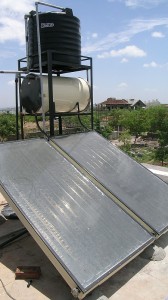In the future, wars will be fought over water, not oil.
Many eminent thinkers have predicted that future wars will be fought not over oil but, over water because our access to clean, potable water is threatened by industrialisation, pollution and our own profligacy. Most of us, especially urban folk, just don’t seem to value it enough; after all, it just takes the twist of a tap to turn it on. For the rural woman who spends a major part of her day trying to get a few pots of water for her family’s drinking, bathing and cooking requirements, it is very precious commodity indeed.
There are many, many things we can do to alleviate this situation and, if we don’t act on it immediately, all the doomsday predictions may very well be fulfilled. It may look like we have a mountain to climb, but if we take it one step at a time, it’s not that hard.
Saving Water
There are many ways to skin a cat. The Internet will give you a thousand ways to save water – some practical, some not so. Here are a few from an architectural point of view.
Continue Reading →
Recycling Water
It’s not just enough to reduce our consumption of this precious resource. What we do use, can – to a large extent – be recycled very easily.
Continue Reading →
Harvesting Rainwater
We have a mountain to climb, but if we take it one step at a time, it’s really not that hard.
A lot of people are thoroughly confused after reading half-baked media articles on Rainwater Harvesting (RWH) and most, as a consequence, dismiss it as an impractical fantasy. Not true. RWH will soon prove to be the only way forward in most cities.
Continue Reading →


